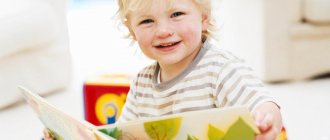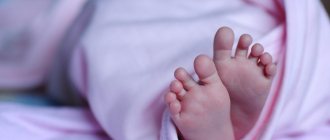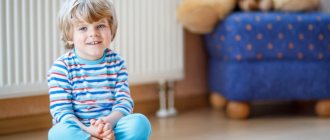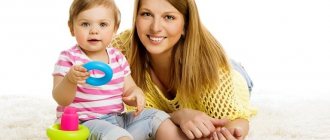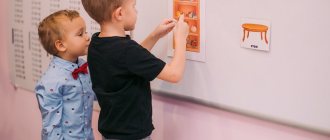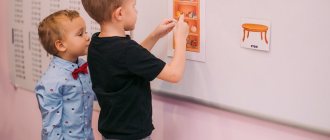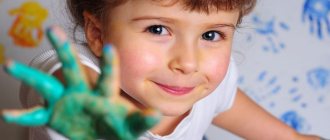The development of a child at this age directly depends on the efforts and attention that parents pay to this issue. Observations of many children show that children with intensive training (mom, dad, teachers in children's clubs) have more developed physical, cognitive and speech skills.
Also, children who have older brothers or sisters (they have someone to follow as an example) turn out to be more developed.
Let's take a closer look at all the skills that a baby should master at 2 years old.
What should a two-year-old child be able to do according to the Munich Diagnostic System?
For parents who want to know the norms of psychomotor development of children under 3 years of age, it is useful to get acquainted with the Munich functional development diagnostic system. It was developed in 1997 and includes practical indicators of child development. According to this diagnosis, by the age of two years the baby should be able to:
- Walk on tiptoes without adult assistance;
- Stand on one leg for a short time;
- Jump;
- Go up and down stairs while holding the railing;
- Open doors;
- Unscrew and tighten the caps;
- String large beads onto a cord;
- Build towers from cubes;
- Throw and roll the ball;
- Name animals;
- Name parts of the body;
- Sort by color, size and shape;
- Correlate the image in the picture with the real object;
- Sing songs;
- Speak in short phrases;
- Play with peers;
A two-year-old child is already quite independent. The baby already has quite well developed coordination, he is constantly in motion. With the help of adults, a two-year-old can easily take care of himself: go to the potty, drink from a cup, eat with a spoon, wash and dry his hands, undress. Support your child's initiative and give him freedom - this way he will quickly learn to be independent.
Signs of speech delay
After two years, some children cannot use speech as a means of communication due to the fact that children’s speech development is delayed. The cause of concern for their parents is the complete absence of speech or a limited number of available words. In addition to a poor vocabulary, speech development delay (SDD) is expressed by the following symptoms:
- the child cannot translate his thought into a speech message, he finds it difficult to answer an adult’s questions;
- active and passive vocabulary accumulate at a very slow pace;
- children have difficulty constructing even a short phrase: “The girl’s ball fell or the girl’s ball” (The girl’s ball fell);
- Children cannot not only build a common sentence on their own, but also repeat it after an adult, for example, Teddy bear came out of the forest;
- in spoken words there are often rearrangements of syllables and sounds, substitution of one sound for another;
- when pronouncing individual sounds, the child notices tension or twitching of the facial muscles;
- he does not understand the meaning of a fairy tale or nursery rhyme read by an adult, and finds it difficult to answer a simple question about its content or try to retell it;
- The baby has difficulty assembling nesting dolls, cubes, and cut-out pictures consisting of four parts.
Development of fine motor skills at 2 years
It is known that improving fine motor skills is closely related to the intellectual and speech development of the baby. At the age of 2 years, children are especially interested in playing with small objects, rearranging them, sorting them, and stringing beads. Most often, it is at this age that the child’s leading hand is determined, but it is useful to do all the exercises with both hands (one at a time and simultaneously). You can get ideas for developing your baby's fine motor skills from this video:
Content:
- Physical Development Physical Skills and Movement
- Fine motor skills
- Weight and height
- What to do if the child still does not start speaking at 2 years old?
- Cognitive development
- Nutrition
- Games
Development of perception in two-year-old children
If in the process of movement the baby explores the capabilities of his body, then with the help of perception (vision, hearing, smell, touch, taste) the child learns about the world around him.
- Vision . It is through vision that children, like adults, receive most information about the world. Children at the age of 2 already have good visual coordination and are able to follow a moving object with their eyes and distinguish between horizontal and vertical lines. However, they cannot yet simultaneously perceive the whole and the parts, so if the baby is in a crowd, it will be difficult for him to quickly detect his adult.
- Rumor . It is worth paying attention to the child’s auditory perception, since if there are hearing problems, the baby will most likely experience difficulties in speech development. At 2 years old, a child should be able to distinguish intonation well and understand simple requests.
- Taste and smell . For some reason, in our culture, practically no attention is paid to the role of these analyzers in a child’s exploration of the world. At the same time, in France, the development of taste buds is considered an important stage in the psycho-emotional development of a child.
- Touch . Tactile contact with significant adults is very important for the mental and physical health of the baby. It is thanks to him that children develop trust in the world, a sense of security and love. In early childhood, tactile perception of objects is on a par with visual perception. Babies acquire ideas about such concepts as cold/hot, hard/soft, smooth/rough thanks to tactile sensitivity.
For the development of a 2-year-old child, it is very important that the baby receives as many impressions as possible. It is desirable that information be obtained from different sources. In the nursery, for the harmonious development of children, a Montessori environment is organized, from which every child can learn exactly what he needs at the moment.
How to help your child talk
When children begin to speak their first words, they really like it. The main way to help your child speak is to communicate with him as often as possible. In infancy, the baby understands speech on an emotional level, so you need to speak expressively to him. All actions associated with it - bathing, massage, feeding, etc. – accompany with emotionally charged words. Call the baby by name, pronounce the names of things, talk about what the child himself does and how well he does it, and also pick up and repeat all the sounds that he makes.
As they get older, it is better to use short and clear sentences so that the child can observe the movement of the lips and apply the knowledge in his speech. You need to maintain a conversation with your baby, ask him questions and try to have a long conversation.
Read books and sing songs.
You can read a book to your child and show the characters in the pictures. They will attract his attention, and auditory perception will help him remember new words. Learning new songs and short rhymes together develops the speech apparatus and also strengthens the bond with the baby.
Develop fine motor skills.
Fine motor skills are the performance of small movements with the hands, fingers and toes, for example: picking through cereals, playing with beads and buttons.
The brain centers responsible for motor skills and speech are located next to each other, so when motor skills are stimulated, speech development occurs faster. Note to moms and dads:
FrutoNyanya produces puree in packets that are covered with fruit lids. Each fruit cap is an element of a developmental construction set from which you can assemble many figures. We had some food and played! Try games to develop fine motor skills with fruit caps, and also watch Video: Development of gross and fine motor skills
Develop vocabulary.
You can show and name surrounding objects to your child: at home, in the park, at a party. The meaning of objects should be explained in simple language. This way the child will expand his knowledge of the world around him, learn new words and learn to speak faster.
Refuse sign language and distortion of words.
It is better for adults to stop mangling words, because a child learns to speak based on the speech he hears around him. If the baby replaces words with gestures, you can pretend that they are incomprehensible. This will encourage him to speak. You should not make your child cry or become hysterical. You should act gently - ask leading questions, pronounce words one after another.
Personal hygiene skills
A two-year-old child is already quite independent, and many parents strive to instill in their child the skills of self-care and personal hygiene. If you approach this issue wisely, then at 2 years old the child will be able to independently:
- Wash;
- To wash hands;
- Brush your teeth;
- Go potty.
Potty training is a challenge for many. Some try to force a child to sit on the potty, while others do not attach much importance to this skill. Scientists have found that children themselves begin to strive to go to the potty at the age of 1.5 - 2.5 years. Until this time, babies are just learning to control their intestines and bladder. Therefore, under no circumstances should you scold your child for “wet matters.” If the child himself wants to go to the potty, be sure to encourage this, praise any attempt by the child to control his body and be patient. Some people potty train quickly, while others constantly pee in their pants at 2 years old, but this is not a deviation from the norm. Be patient and your baby will definitely learn to go potty.
Self-diagnosis of delay
It is better to plan diagnostic measures closer to the end of the third year of life. First, you need to carefully observe the child when he plays, in ordinary situations, when communicating with peers and adults. Attention is paid to the child’s vocabulary, ability to construct a phrase, and the number of words in sentences. It is important to note whether the child speaks quickly or slowly, since a fast rate of speech is a prerequisite for stuttering.
To check sound pronunciation, children are asked to name the objects shown in the pictures, rather than repeat the words after an adult. Otherwise, it will give a biased picture, since the child, imitating his elders, pronounces sounds better than usual. The presence of the following sounds is checked:
- whistling - s, z, c;
- hissing – w, w, h, shch;
- voiced – c, b, d, d;
- sonorous - l, r.
At the same time, they determine whether the baby rearranges syllables, misses sounds in words, or shortens the words themselves. To find out how a child constructs a phrase, he is offered pictures with the actions of familiar characters depicted on them: children, pets. You can use illustrations in children's books for these purposes. It is enough that the phrases composed by the child contain 2-3 words.
Emotions and social skills
Emotional development plays a big role at this stage of development. The baby experiences many emotions that change rapidly and learns to control them. At the same time, the baby also learns about the feelings of other people. Parents need to help him differentiate between his feelings and express them correctly.
For example, outbursts of anger, embarrassment, disappointment are normal. Often children do not know how to express such vivid emotions. The child learns this from his parents, even if they do not focus on it. A child at this age skillfully reads all the information he needs from adults.
Also at this age, the child “gropes” for what is permitted: he observes how his behavior affects mom and dad.
For a two-year-old child it is normal if he:
- copies others, especially adults and older children;
- becomes emotionally overexcited when playing with other children, as well as from a large number of gifts and animated entertainment during the holidays;
- shows more and more independence;
- demonstrates defiant behavior (does what he was told not to);
- attracts other children to his games, especially when playing catch.
Why does a first-grader need a speech therapist: speech disorders and school work
Problems with speech development appear exclusively in childhood, and the last “chance” to encounter them is first grade. During this period, difficulties “preserved” from an early age can manifest themselves as dysgraphia (impaired written language) or dyslexia (impaired reading - the brain cannot transform incomprehensible graphic images into letters and, as a result, read the word correctly).
As a rule, these deviations become obvious by the end of the first grade. If a child has difficulty mastering competent writing and reading, he is inattentive (does not write the endings, starts writing from the second syllable, confuses the letters “d” and “b”, “m” and “n” and others), there is no point in hiring him a tutor. It is very possible that the issue is a speech deviation, which can be corrected with the help of speech therapy sessions.
Article provided by OsteoPolyClinic
Physical development
Parents may worry if the child is too thin or, conversely, overweight, however, the main thing is that he continues to grow at a stable pace.
At 2 years, in addition to growth, you will also notice obvious changes in the baby’s appearance. Body proportions begin to change. Children's muscles become stronger and, if previously the baby had a round, plump tummy and short arms, now in terms of body structure he becomes more like a preschooler than a baby.
Physical skills and movement
At this age, children can run and fall noticeably less.
At 2 years old a child can:
- jump on the spot;
- ride a tricycle;
- recognize objects and name them (if he doesn’t speak yet, then point them with a pen);
- climb and descend stairs almost independently, sometimes using an adult’s hand or stair railings for balance;
- kick and catch the ball;
- stand on one leg for a few seconds;
- stand on tiptoes;
- run;
- climb on and off furniture independently;
- pulling toys on a broken string while walking.
Be there while your little one explores the world. This will make the child feel safe. With your support now, he will be able to confidently start something new in the future.
Safety
When your baby is so active, it's a good idea to think about his safety in the home. Check if you have taken care of all the points:
- All dangerous items, including medicines and washing powders, are kept high under lock and key.
- Furniture and TVs are securely attached to the wall. Even if a tall cabinet or chest of drawers seems very heavy and unliftable to you, a child can easily knock it over.
- Set the hot water temperature in the tap to no more than 50°C, if possible.
- Always supervise children near water.
- Install locks on the windows and do not leave your child in a room with an open balcony or window.
For the safety of the little ones, you can use a GPS watch. By connecting them to the “Where are my children” application, you will always be calm about your child. The presence of a geo-tracker and the Surround Sound function will tell you how the baby is doing if you left him with a nanny for a while or if the baby started going to nursery.
Fine motor skills
Two-year-olds already enjoy playing with small objects. This helps develop fine motor skills.
The child can:
- string beads onto a cord;
- collect small items in containers;
- turn the pages of books;
- collect a pyramid;
- unfasten Velcro and zippers;
- hold a spoon, fork, comb.
When playing and practicing with small objects, do not leave your baby alone - he may swallow them or put them in his nostril or ear.
Weight and height
In the second year of life, growth and weight gain slow down noticeably. Moreover, boys are on average 0.8-1 kg heavier than girls and slightly taller.
When comparing your child’s performance with the generally accepted ones, it is important to remember: all children are different. As a rule, there is no need to panic if there is a slight deviation from the norm . Moreover, during visits to the pediatrician, the doctor still continues to measure the weight and height of the baby every time.
Analyze your baby's height and weight:
| Indicators of girls at 2 years old | Indicators of boys at 2 years old | ||||||
| Weight, kg) | Height (cm) | Weight, kg) | Height (cm) | ||||
| Lower border and upper | Norm | Lower border and upper | Norm | Lower border and upper | Norm | Lower border and upper | Norm |
| 8,1-13 | 11,5 | 76,7-89,6 | 86,4 | 8,6-15,3 | 12,2 | 78,3-93,6 | 87,5 |
⠀ Although boys tend to be larger than girls, such important parameters as chest and head circumference are not yet very different. On average, at 2 years old, a boy’s head circumference should be about 47.5 cm, and his chest circumference should be 48.5 cm. For girls, the norm for head circumference is 46.5 cm, and chest circumference is 48.5 cm.
Sense organs
At 2 years old, the baby pays attention to everything around him. The child is interested in bright colors and different textures. He can already distinguish objects by shape, size and color. The senses help him understand the world.
Vision
At this stage of development, children receive the main information through vision. At 2 years old, they can distinguish primary colors, and from 2 to 3 years old they begin to see pale and pastel shades. At the same time, it is still difficult for them to coordinate the visual system. For example, if a child loses sight of his mother in a crowd, he will not be able to quickly find her.
Develop your child's observation skills - this will improve his fantasy and imagination. And don’t forget about a scheduled visit to a pediatric ophthalmologist at age 2.
Touch
Tactile perception is now very important for the baby. The sense of touch helps him distinguish between soft and hard objects, hot and cold, as well as various textures (rough, ribbed, soft, velvet, etc.)
Hearing
Children at the age of 2 already perfectly understand the intonation with which an adult speaks. Also, kids immediately perceive familiar songs or rhymes by ear.
Loud noises are unpleasant for the baby. Try not to overload the child’s psyche with them. If this happens, let him rest in silence.
Smell and taste
Still at 2 years old, children often explore objects by placing them in their mouths. At the same time, the child is already able to distinguish between sweet and salty, sour and bitter. Also, the baby successfully remembers the characteristic taste of a particular product, the memory of which will remain for a long time. This will influence the formation of the baby’s taste preferences in the future.
Try to feed your child a variety of foods. The sooner he learns to recognize tastes, the better for the development of his sensory system.
Warning signs for parents
Each child develops at his own pace and it is impossible to say exactly when he will master this or that skill. Of course, there are developmental milestones, and if your baby hasn't reached them as he gets older, it's worth discussing this with your pediatrician. Contact a specialist if you notice the following problems in your two-year-old baby that indicate developmental delay:
- does not walk by 1.5 years (at 2 years you should have already found out the reason for this from doctors) or does not walk steadily;
- walks exclusively on tiptoes;
- does not speak at least 15 words or does not speak at all;
- does not know the functions of common household items (toothbrush, telephone, kettle, spoon, etc.);
- does not copy actions or words;
- does not follow simple instructions;
- cannot push a toy on wheels;
- doesn't even try to draw;
- does not pay attention and does not play with peers;
- cannot hold small objects in hand (for example, a crayon);
- loses the skills he once had.
No matter what happens, never shake your baby. This can cause bleeding inside the brain and likely permanent damage.
